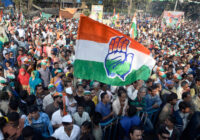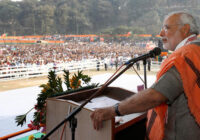Gone are the days when only officers of the Indian Foreign Service and a chosen few traveled abroad. The socialist India created by Jawaharlal Nehru and Indira Gandhi is safely dead. Indians now travel extensively, their relatives do WhatsApp video calls from all parts of the world, their children study in the US, the UK, Canada, Australia, Singapore and even Hong Kong and they see images of foreign cities on a daily basis on their mobile screens.
Increasingly, Indians are asking themselves why their cities look and feel like slums. Buildings are in disrepair, city roads have potholes, sewage overflows, tap water is far from clean and waste is everywhere. Cody Daniel, an entrepreneur, MIT alumnus and great lover of India, once remarked during his visit to Gujarat, “The tragedy of India is trash.”
Even ten years ago, Indians might not have felt the same way as Daniel. Today, many of them do. Indians have achieved success in cities like Singapore, Sydney and London. They have run global institutions and even other nations. Middle-class Indians are often world-class. They want their own cities to be world-class, not trash towns that seem war-ravaged and shell-shocked.
Ironically, as India’s economy has grown and the middle class has increased, its cities have deteriorated. Older citizens in Bengaluru (once Bangalore) speak of how their beloved garden city has now become a garbage city. Pune, the historic city of the Peshwas, is another casualty. Urban populations have outgrown the cities they live in and put tremendous pressure on infrastructure. Urban authorities have simply failed to deliver.
Urban cash cows fund redistribution
India’s politicians have long taxed cities and redistributed the revenue to rural areas. Despite significant improvement in tax revenues by the current government, India’s tax base remains frightfully narrow. The urban middle class shoulders much of the tax burden but gets very little in terms of return.
Historically, neglect of urban areas did not hurt political parties in elections. India was a largely agrarian society. In the early days of India’s independence, the rural population was 82%. This figure has been declining consistently and, in 2022, only around 64% of Indians lived in villages. As they did during British colonial rule, cities have spearheaded social and political movements. The Indian National Congress (INC) was an urban organization until Mahatma Gandhi made it a mass movement.
After independence, Jawaharlal Nehru became prime minister. He embraced socialism, which meant heavy taxation of India’s small urban population. His daughter Indira Gandhi doubled down on socialism; so did the opposition that unseated her in the 1977 elections. Socialism, not Hinduism, led to the infamous Hindu rate of growth.
Liberalization in 1991 freed up the economy and Indian growth rates improved, but urban areas have still disproportionately borne the burden of taxes.
Historically, it is this disaffected voter base that has seeded new parties. Initially, the core base of the Bharatiya Janata Party (BJP) was small traders in urban areas. Most recently, the Aam Aadmi Party (AAP) has targeted the urban vote, promising better public services to this section of the population. Both are following in the footsteps of the INC that began in Mumbai in 1885.
Today, urban Indians are disaffected again. They do not expect their cities to turn into Singapore or London, but they want water supply, electricity, public transport, schools, basic healthcare, basic law and order and some public spaces such as parks and playgrounds. These Indians feel they have no representation. During a cross-country tour, one of the authors met business leaders, executives, engineers, doctors and many other urban Indians. Invariably, they complained that they had no real representation. Politicians were milking them for taxes and redistributing them to rural areas or, worse still, doling out freebies whilst neglecting cities. Above all, these urban voters want more livable cities and a better quality of life.
The current situation is reminiscent of the Nehru family-led INC pre-2014. The grand old party of India thought that the Hindu vote could never consolidate and ignored the growing threat from the BJP. Today, it is coming from the opposite direction. The BJP has been taking its urban voter base for granted. The party has imposed unpopular tax policies with the assumption that urban voters have nowhere to turn to. Besides, some BJP leaders seem to think that these voters do not have the numbers to matter.
India’s seemingly dominant party might be in for a surprise. The success of AAP is based on targeting urban voters. The party has solidified its support by improving schools and promising primary healthcare centers as well as providing free water and electricity. In the 2022 Gujarat elections, the BJP won 52.52% of the vote in Prime Minister Narendra Modi’s home state. Yet it is important to note that young AAP got 12.91% of the vote, almost all of it in urban areas.
Urban middle-class voters were once loyal to the BJP, but that loyalty is increasingly being tested. A crisis is brewing. After months of internecine warfare, the opposition seems to be coming together to take on the Modi-led BJP. Should urban voters switch to other parties, the government might lose valuable and much-needed support. The BJP will have to act speedily before next year’s 2024 national elections to retain its urban support.
No real local democracy or competent urban government
India is a vibrant democracy, but most people do not realize that the unit of power is the national government in New Delhi and the state government in capitals like Chennai, Lucknow, Kolkata, Mumbai and Guwahati. The prime minister, known often as PM, rules the country largely through the heaven-born Indian Administrative Service (IAS). Chief ministers (CMs) of states also use IAS officers to enforce their writ.
Rural districts and urban areas are ruled by IAS officers who are modern-day mansabdars— feudatories sent by the Mughal emperor to collect revenue and do his bidding. They are called district collectors (because the job of ICS officers was to collect revenue for the British Empire) or district magistrates (because the ICS officers were responsible for the maintenance of law and order in the district). A district magistrate is popularly referred to as the DM. In India, it is a running joke that only three positions matter: PM, CM and DM. Everyone else has to serve these three regardless of whether they are surgeons, scientists or software engineers.
The IAS DMs are responsible to the CMs in state capitals and not to the population in their jurisdiction. Descendants of the imperial Indian Civil Service (ICS), they still suffer from the hangover of the British Raj. Too many IAS officers invariably behave like rulers instead of public servants. Some things have changed, though, and not for the better. Unlike ICS officers who had secure tenures, IAS officers are transferred at the drop of a hat. They know that they enjoy their position thanks to the patronage of the chief minister. They answer upwards, not downwards.
Simply put, Indian cities are run not by elected officials, but by IAS satraps. Unlike Chinese Communist Party bosses who spend a lifetime in their fiefdom and move up the hierarchy on the condition that they deliver economic growth and build infrastructure, IAS officers rarely look back at the districts or cities they run. They settle around the national capital New Delhi or various state capitals and tell tall tales of how they “civilized” Nagapattinam or East Champaran. Truth be told, what IAS officers do is immaterial. Loyalty to their political bosses matters much more than their performance.
This means that most IAS officers do not care two hoots about the concerns of local citizens. In the words of a senior IAS officer who would only speak on condition of anonymity, the so-called steel frame of India has become a “steal frame” instead. On July 20, airport authorities stopped an IAS officer with assets worth over $12 million (100 crore rupees) and a prime suspect in a Covid scam from fleeing the country. Ironically, this officer is also the CEO of the Maharashtra Housing and Area Development Authority (MHADA), responsible for providing affordable housing in the state. Needless to say, MHADA has done an awful job of providing housing in any of the state’s cities.
In Noida, where the parents of one of the authors live, politicians and IAS officers were involved in an over $6 billion (50,000 crore rupees) scam. While Chief Minister Yogi Adityanath has taken action against minor forest officials, he has spared the IAS officers who engaged in this grand heist that would have done Robert Clive proud. Unsurprisingly, Noida is not exactly a pleasant place to stay. Other cities have also been victims of such scams and are not doing much better.
In rural areas, citizens are more forgiving of IAS officers engaging in the loot. In India’s cities, the times they are a-changin’, and citizens expect more. As stated earlier, they return from cities abroad wondering why their urban areas cannot be cleaner, greener and better run. Most political parties, including the ruling BJP, are increasingly out of touch with this changed zeitgeist. IAS officers clear one exam in their 20s to become feudal barons for life. Politicians, especially in the ruling BJP, do not have that luxury. In particular, overtaxed urban voters will weigh, measure and find them wanting if Modi’s promise of achhe din (good days) rings false.
The views expressed in this article/video are the author’s own and do not necessarily reflect Fair Observer’s editorial policy.
Support Fair Observer
We rely on your support for our independence, diversity and quality.
For more than 10 years, Fair Observer has been free, fair and independent. No billionaire owns us, no advertisers control us. We are a reader-supported nonprofit. Unlike many other publications, we keep our content free for readers regardless of where they live or whether they can afford to pay. We have no paywalls and no ads.
In the post-truth era of fake news, echo chambers and filter bubbles, we publish a plurality of perspectives from around the world. Anyone can publish with us, but everyone goes through a rigorous editorial process. So, you get fact-checked, well-reasoned content instead of noise.
We publish 2,500+ voices from 90+ countries. We also conduct education and training programs
on subjects ranging from digital media and journalism to writing and critical thinking. This
doesn’t come cheap. Servers, editors, trainers and web developers cost
money.
Please consider supporting us on a regular basis as a recurring donor or a
sustaining member.
Will you support FO’s journalism?
We rely on your support for our independence, diversity and quality.







Comment